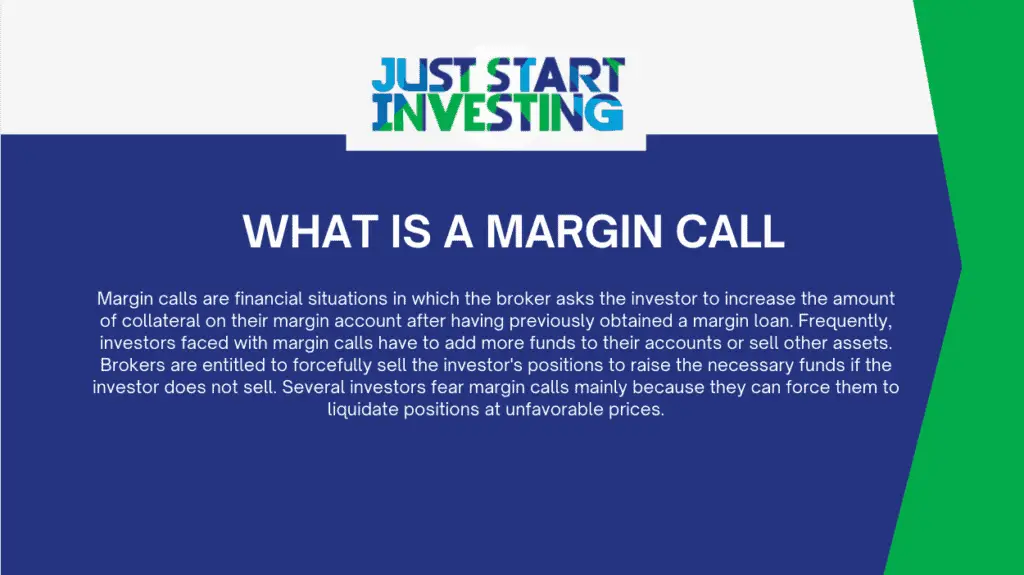You might have heard the term margin trading and wondered what it means or if you can do it.
In order to execute trades greater than what is available in your account, you must provide an additional sum of money to your broker, known as a margin.
Margin trading is considered an excellent investment strategy for investors who require a high level of risk since it allows them to profit from an increase in the price of their investments.
Even though margins are easy to define, it is more difficult to explain how exactly they work.
Throughout this article, we will discuss margin trading and why people choose to invest through this type of financing!
What Is Margin Trading
Margins trading refers to buying more stocks than a person can afford in the stock market. During margin trading, securities are bought and sold simultaneously. The approach to time duration has been relaxed over the years by different brokerages. As a result, investors must speculate or guess how the stock will move during a session.
Suppose you have a 60% margin requirement on your margin account, and you want to buy securities worth $10,000, you will have to use $6,000 as your margin, and you can borrow the rest from your broker.
Buying securities on margin is the equivalent of using the current cash or assets in your account as collateral. An interest rate is required to be paid for the collateralized loan. Leverage, or borrowed money, magnifies both the losses and gains for an investor.
The margin trade is an easy way to make fast money. Since the advent of electronic stock exchanges, even small traders now have access to this once highly specialized field.
But also, the margin trading game can be risky and expensive for investors without the expertise and money to deal with the loan, so you should know how it works before considering this option.
How Does Margin Trading Work
Getting started isn’t difficult. In addition to being able to purchase more stock than you’re able to afford, margin accounts give you the option to borrow at any time. Brokers would lend funds to their clients to buy shares and would hold them as collateral.
You need to open a margin account with your broker before you can trade instead of a typical brokerage account. Margin accounts function as brokerage accounts at which the broker lends money to the investor to let them purchase more securities than they could with their account balance.
To open a margin account, your broker must get your consent. You can either have this margin account as part of your standard account opening agreement, or you can have it as a separate agreement.
The broker needs to be paid a certain amount of cash upfront to execute a trade, called minimum margin. By squaring off, the broker could recover some money if the trader loses the bet and is unable to recover the money.
An initial margin (IM) is required upon opening an account, which is a percentage of the total traded value predetermined by the broker. The initial investment for a margin account must be at least $2,000, though some brokerages require more.
Margin accounts allow you to borrow up to 50% of a stock’s purchase price when they are opened and operational. It is essential to know that you do not have to margin up to 50%. Taking out a smaller loan, maybe 10% or 25%, would be feasible.
To begin trading, remember these three steps.
- Firstly, you must maintain the minimum margins (MM) throughout the session since a very volatile day might cause the stock price to plunge more than you expected. The trade-off will be less than the MM if, for example, a Tata Steel stock priced at Rs 400 falls 4.25 %, and the IM and MM represent 8% and 4% of the shares purchased. A broker will ask you for more funds to maintain the margin or automatically square off the trade.
- After every trading session, you must square off your positions. You must sell The shares you bought. You’ll also need to buy shares at the end of the session if you’ve sold any.
- Make it a delivery order after you’ve traded; in this case, you will need to keep cash on hand to pay for all the stocks you bought during the session, as well as to cover the brokerage charges.
A missed step automatically results in closing the position in the market.
What Is A Margin Call?

Margin calls are financial situations in which the broker asks the investor to increase the amount of collateral on their margin account after having previously obtained a margin loan. Frequently, investors faced with margin calls have to add more funds to their accounts or sell other assets. Brokers are entitled to forcefully sell the investor’s positions to raise the necessary funds if the investor does not sell. Several investors fear margin calls mainly because they can force them to liquidate positions at unfavorable prices.
What Is Margin Debt
We can define margin debt simply as the amount of money an investor borrows from their broker to purchase shares of stock. There is no margin for cash-only accounts. Investing in margin loans can boost returns for investors as brokers earn interest income daily. However, if the value of stocks or ETFs in the margin account falls, the pain can be amplified.
Investors that have fully margined their account mean they have purchased securities using all available lending resources. A fully invested account is one in which all of the available cash has been used to buy stocks without any margin.
In determining whether investors are overly ebullient, do not look at the total amount of margin loans used, but look at the increase in margin over last year as reported by FINRA, the industry watchdog. A complete list of FINRA’s margin statistics can be found on its website.
There is a report that summarizes the total debit balances in securities margin accounts, as well as the total free credit balances in all cash accounts and all securities margin accounts.
FINRA Margin Debt is at a current level of 844.32B, down from 882.10B last month and up from 613.83B one year ago. This is a change of -4.28% from the previous month and 37.55% from one year ago.
Since the 1970s, IBD has identified four instances in which the year-over-year change in margin debt exceeded 55% in a single month. On three occasions, the market had already seen a supercharged run. Getting overly frothy had gotten things out of control.
The market tops in these three instances coincided with margin debt explosions:
| May 5, 1972: Margin debt up 55.8% year over year.Dec. 3, 1999: Margin debt up 58.9%.June 1, 2007: Margin debt up 67.5% |
Risks Of Margin Trading
Do you get nervous when faced with a margin call or maintenance call? That’s an entirely reasonable response.
The value of stocks fluctuates constantly, undermining the maintenance level of investors. Furthermore, brokerage firms may raise the maintenance requirement for margin loans without much warning when the fine print of margin loans permits it.
Whenever a margin call occurs, or an account balance drops, margin transactions are likely to cause financial problems, including:
- Having to lock in losses. In the event that you have to sell off shares in order to cover a margin call, you no longer have the option of holding onto the stock to see if it recovers.
- Taxes related to short-term sales. To avoid a higher short-term capital gains tax bill, investors trading in a taxable brokerage account must consider what shares of what stock they are putting on the market. When you leave the broker in charge of bringing your account into compliance with margin requirements, you have no say in which stocks will be sold.
- A credit hit for you. In the same way as conventional loans, failure to repay a loan according to the contract terms can severely harm a borrower’s credit history.
- A greater risk of losing money. When you buy on margin, you are likely to lose more than if you stuck to your cash reserves instead.
Consider This When Buying On Margin
If you decide to trade on margin, remember the costs associated with it and why experienced investors margin on short-term investments!
Even though margin is a method of borrowing money, as we mentioned, you still have the primary cost of the interest you have to pay on your loan.
Unless you decide to make payments, interest charges will be applied to your account. The more interest charges are added to your debt, the higher your debt level becomes. The more debt you have, the higher the interest charges, and the chain goes on.
This is why margin is mainly used for short-term investments. Investing over a long period will require a higher return to break even. Over time, margined investments have slim chances of making a profit.
It is not possible to buy all stocks on margin. The Federal Reserve Board regulates Marginable stocks. Due to the day-to-day risk involved with penny stocks, over-the-counter Bulletin Board (OTCBB) securities, or initial public offerings (IPOs), brokers will not allow customers to purchase these types of equities on margin. Some brokerage firms may not margin certain stocks, so check with your brokerage firm to determine if your margin account is restricted.
So, after learning about margin stocks, you should carefully determine your ability to keep up with these types of investments. Margin loans, like credit cards, can be valuable tools for leverage. In most cases, margin trading can enhance profits and open up trading opportunities for investors who understand the risks and have adequate investing experience.
But always be cautious and be patient with the trading forecast to make the right decision. Take heed of all the margin loan warnings, and don’t get into the market before fully understanding what you’re doing.
Want to learn more about trading? Check out these articles:
- 5 Stock Trading Tips for Beginners
- Dead Cat Bounce: A Complete Guide to This Stock Trading Term
- Stock Market Crash 2021: Ultimate Predictions

Just Start Investing is a personal finance website that makes investing easy. Learn the simple strategies to start investing today, as well as ways to optimize your credit cards, banking, and budget. Just Start Investing has been featured on Business Insider, Forbes, and US News & World Report, among other major publications for its easy-to-follow writing.
